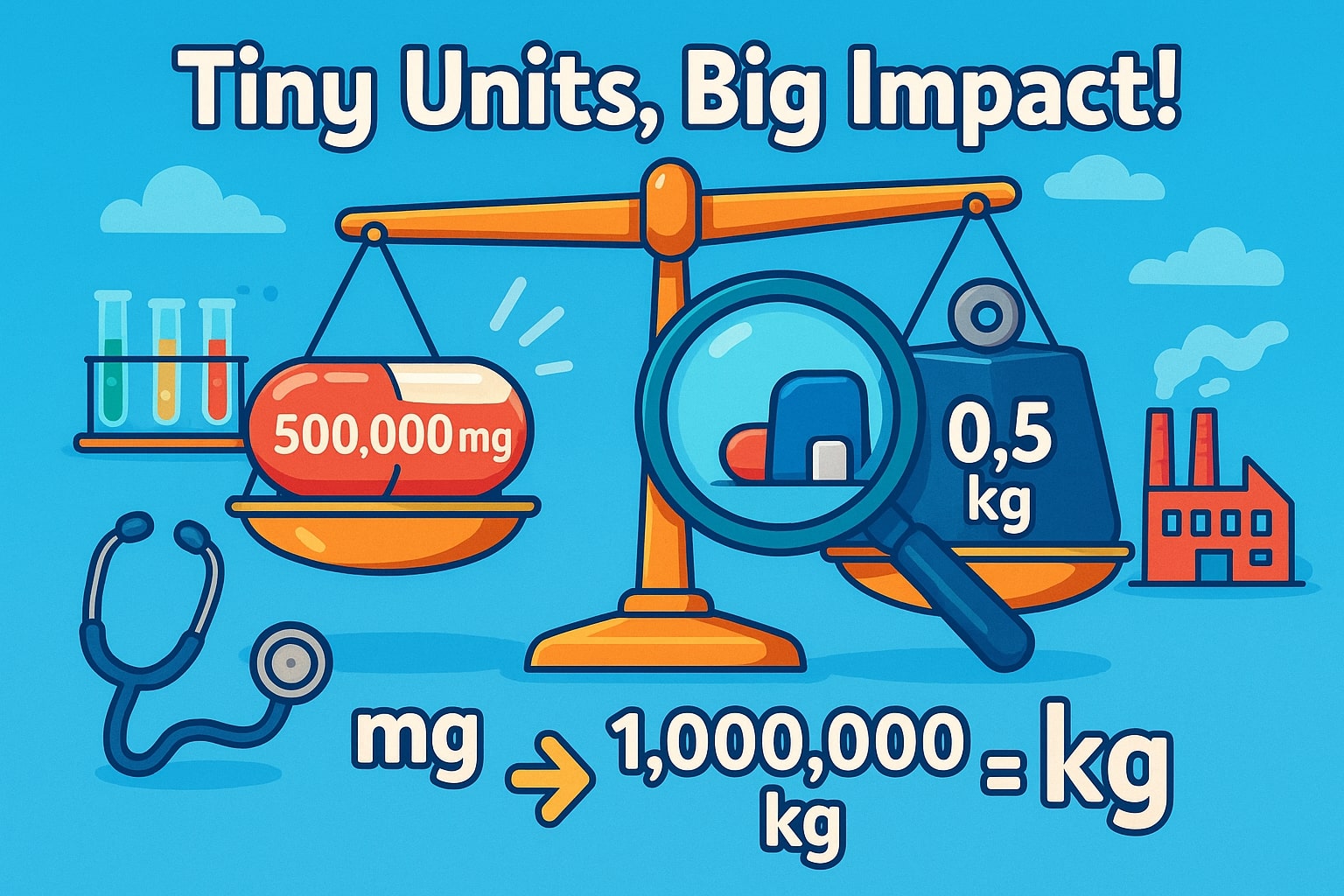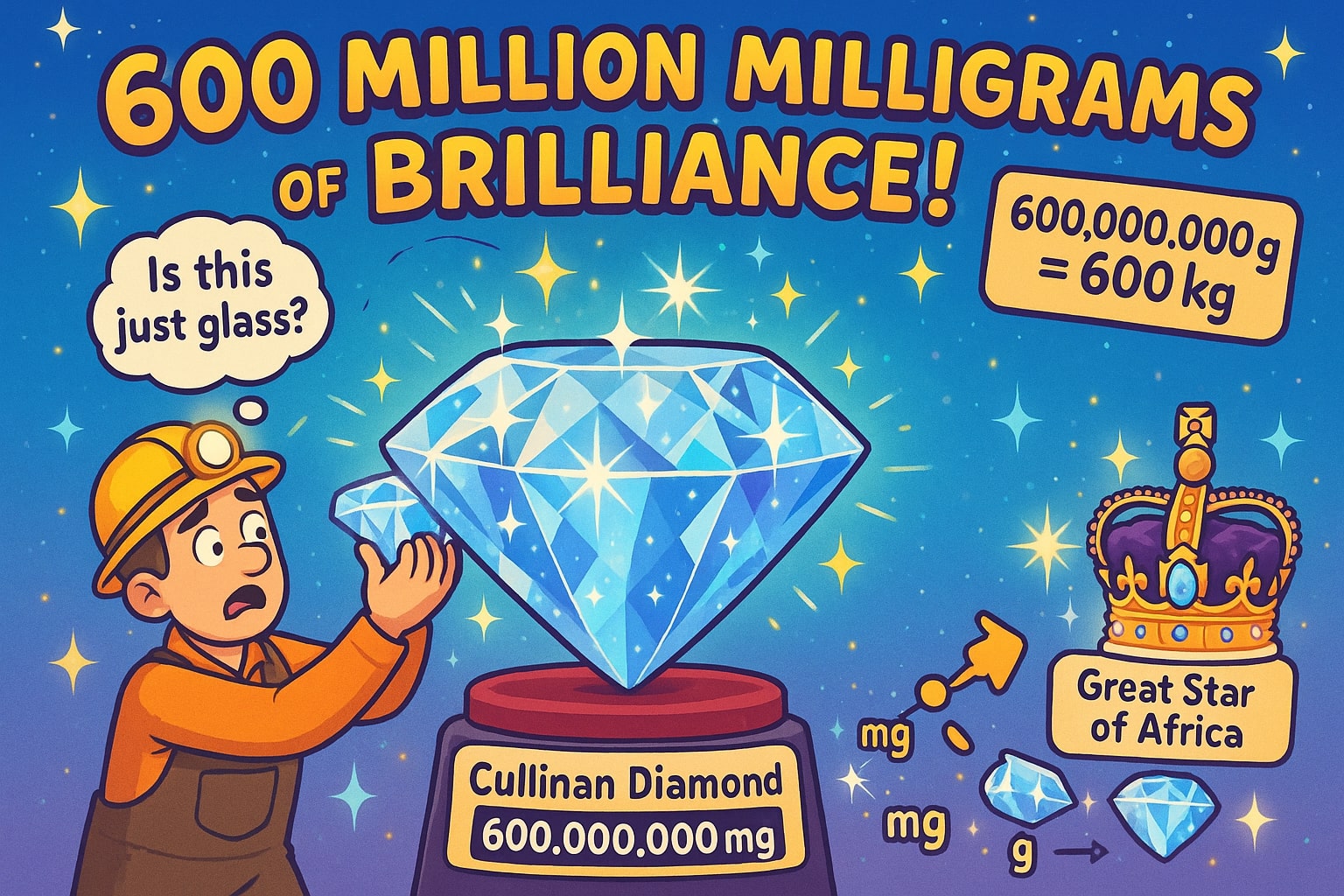Now that you know how to convert mg to kg, you can confidently switch between micro- and macro-scale measurements. For more versatile unit switching—across weights, lengths, volumes, and beyond—explore our comprehensive Conversion tool and make every calculation effortless!
How to convert milligrams to kilograms?
Converting mg to kg is essential when working with very small or very large weights in science, medicine, and industry. Since milligrams (mg) and kilograms (kg) are both metric units, the conversion is straightforward—but precision matters. For instant, reliable results—whether you’re preparing laboratory reagents or tracking product weights—try our intuitive Weight Converter!

Milligrams and Kilograms
-
Milligram (mg) = One-thousandth of a gram (0.001 g)
-
Kilogram (kg) = 1,000 grams (1,000 g)
Since 1 kilogram = 1,000,000 milligrams, milligrams represent tiny weights, often used for medicines, chemical substances, and micro-measurements, whereas kilograms are commonly used for body weight, food, and industrial goods.
Formula to Convert mg to kg
To convert milligrams to kilograms, use this formula:
Kilograms (kg) = Milligrams (mg) ÷ 1,000,000
Example: Convert 500,000 mg to kilograms:
500,000 ÷ 1,000,000 = 0.5 kg
Did You Know?
-
A grain of salt weighs about 50 mg, meaning 20 grains equal 1 gram.
-
The recommended daily intake of calcium for adults is around 1,000 mg (1 g).
-
A small hummingbird weighs around 2,500 mg (2.5 g).
-
The average human brain weighs 1,400,000 mg (1.4 kg).
-
The heaviest gold bar ever cast weighed 250 kg (250,000,000 mg)!
The 600-Million-Milligram Diamond
In 1905, a miner in South Africa discovered the largest diamond ever found, the Cullinan Diamond. Weighing an astonishing 600 million mg (600 kg), it was later cut into multiple stones, some of which are now part of the British Crown Jewels.
The Cullinan Diamond was so large that the mine manager initially thought it was worthless glass. Today, its fragments, including the Great Star of Africa (530 carats), are among the most valuable gems in history.


